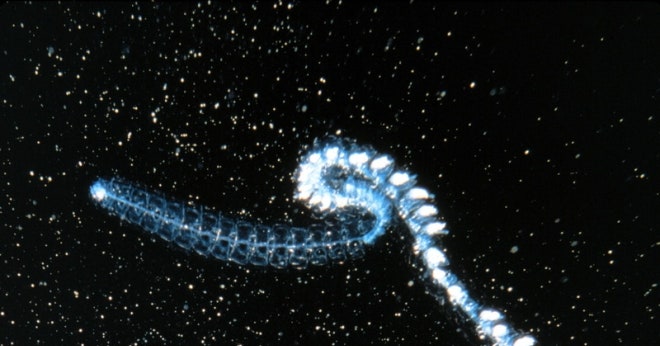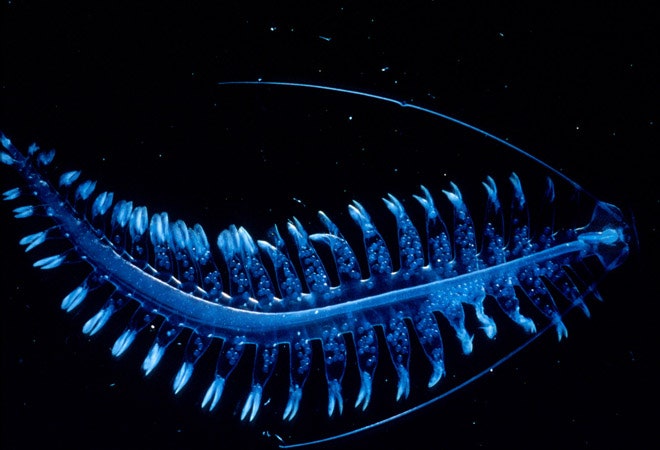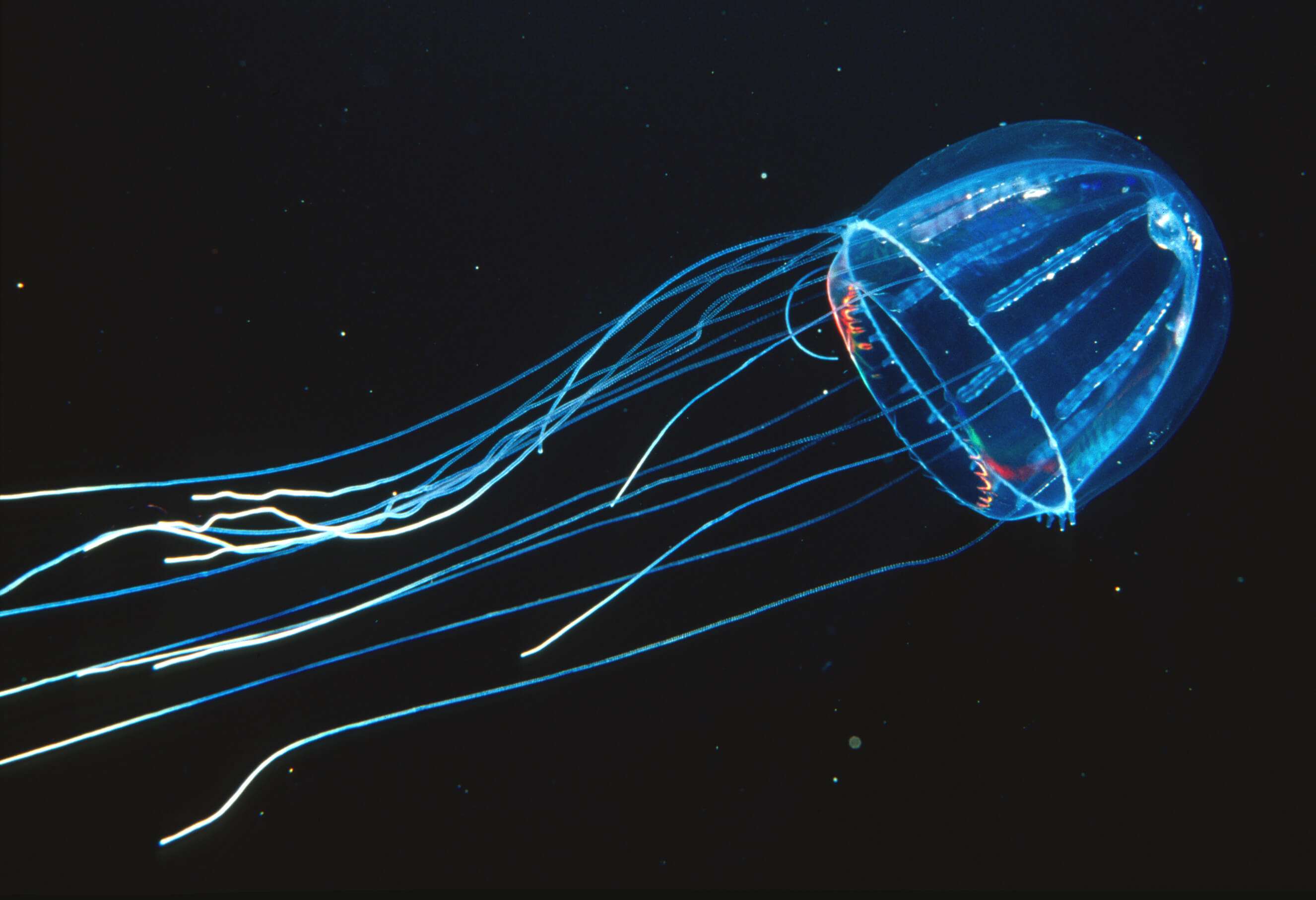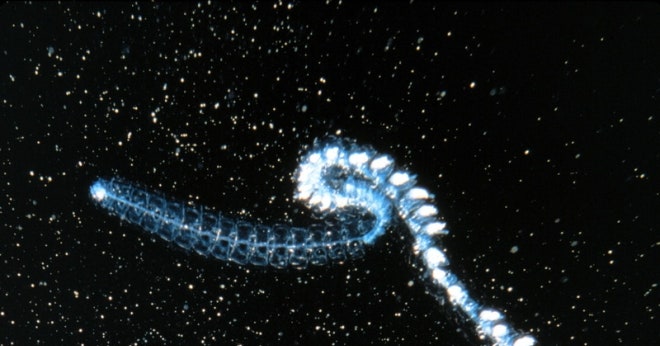The Deep-Sea World: A Place of Eternal Darkness
Imagine a world where sunlight never reaches. The deep sea, a realm of perpetual darkness, is home to some of the most fascinating creatures on Earth. Here, in the abyss, nearly 75% of marine animals have adapted to produce their own light. This phenomenon, known as bioluminescence, is not just a survival tool—it’s a mesmerizing light show that illuminates the ocean’s depths. Without sunlight, organisms rely on their glowing abilities to navigate, hunt, and communicate in this alien environment.

Image: Clusterwink Snail, WIRED
The Science Behind the Glow
Bioluminescence is a chemical reaction that occurs when two key components—luciferin (a light-emitting molecule) and luciferase (an enzyme)—combine. This reaction produces a photon of light, creating the glow we see. Unlike fluorescence, which requires an external light source to activate, bioluminescence is entirely self-generated. For example, the anglerfish doesn’t produce its own light but relies on symbiotic bacteria housed in its lure to glow. This distinction is crucial, as it highlights the unique adaptability of deep-sea life.
Functions of Bioluminescence in the Deep Sea
Attracting Prey
In the deep sea, food is scarce. Predators like the anglerfish have evolved bioluminescent lures to attract unsuspecting prey. The glowing tip of its appendage mimics the appearance of smaller creatures, luring fish close enough to be caught. Similarly, the angler siphonophore uses glowing tentacles to trick prey into swimming directly into its stinging cells.

Image: Tomopteris, WIRED
Communication
For creatures like lanternfishes, bioluminescence is a language. These fish have distinct light patterns on their bodies, which they use to recognize mates of the same species in the vast darkness. These glowing signals are vital for social interaction and reproduction, ensuring their survival in the deep.
Defense Mechanisms
Bioluminescence also serves as a shield. The vampire squid, for instance, releases a cloud of glowing fluid when threatened. This “smoke screen” distracts predators, giving the squid time to escape. Other animals, like the octopus squid, can detach a glowing arm to confuse attackers, much like a lizard shedding its tail.
The Color Spectrum of the Deep
Most bioluminescent organisms emit blue-green light, as these wavelengths travel farthest in water. However, some species, like the loosejaw dragonfish, produce red light—a color invisible to most deep-sea creatures. This unique ability allows the dragonfish to hunt red-colored prey that would otherwise remain hidden in the darkness.

Image: Colobonema Sericeum, Monterey Bay Aquarium
Symbiotic Relationships: Nature’s Collaboration
The Hawaiian bobtail squid is a perfect example of nature’s teamwork. It hosts bioluminescent bacteria in its light organs, which help it blend into its surroundings. In return, the bacteria receive nutrients and a safe place to live. This mutually beneficial relationship showcases the intricate balance of life in the deep sea.
Evolution and Adaptation
Bioluminescence has evolved independently over 40 times across different species, proving its importance for survival. From glowing plankton to deep-sea squids, this adaptation has shaped the way creatures thrive in one of Earth’s most extreme environments.
Common Myths Debunked
Contrary to popular belief, not all marine organisms luminesce in multiple colors. While some species, like ctenophores, display a rainbow of hues, many produce only blue-green light. Additionally, bioluminescence is not the same as fluorescence—a misconception often perpetuated by their similar appearances.
Stunning Natural Phenomena
One of the most breathtaking displays of bioluminescence occurs on the ocean’s surface. When disturbed, bioluminescent plankton create glowing waves that light up the night. These natural light shows are a reminder of the ocean’s beauty and mystery.
The Future of Bioluminescence Research
Scientists continue to explore the potential of bioluminescence, using it in medical imaging and environmental monitoring. This natural light source offers endless possibilities for innovation, making it a key area of study for years to come.
References:
8 Beautiful Bioluminescent Creatures From the Sea | WIRED – link
Illuminating the facts of deep-sea bioluminescence | Stories … – link
Categories: Do you know, Marine Biology, Natural Phenomena
Tags: Bioluminescence, Deep-Sea Creatures, marine science, ocean mysteries
Religion: None
Country of Origin: World
Topic: Bioluminescence in Deep-Sea Creatures
Ethnicity: None



